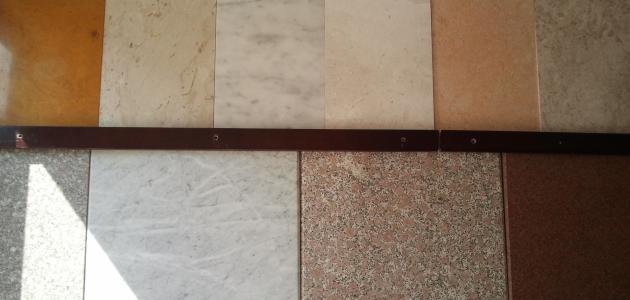Marble Man has known marble stone for hundreds of years, where he worked to use it in decorating and decorating palaces, temples such as churches, mosques and many other luxurious buildings and castles, because of its beautiful and bright colors that give a unique aesthetic appearance in the places where it is placed, and due to the increasing demand for The use of marble through the ages and the necessity of its presence in every home. Man has worked to develop marble industries to include several types and shapes that are more qualitative than the previous one, which makes them last longer when used without breaking or shattering, and the types of marble can be listed as follows. Types of marble Natural marble Natural marble is formed in the form of crystalline stones due to a number of natural factors that occur in the inner layers of the earth from high temperature, soil pressure and many others, which collectively work to form marble stone in several colors, shapes and degrees of different hardness, which helped in the formation of several types Of natural marble with different quality for human use, and among these types: Calcite Marble is characterized by its low levels of magnesium carbonate, which is less than 5% of its total components. Dolomiti marble is characterized by its high content of magnesium carbonate, which varies between 5% to 40% of the marble composition according to the nature of the areas in it. Agate marble, the advantage of containing solid calcium carbonate, which was formed as a result of the gradual accumulation of cold solutions passing through small rivers, and this marble is characterized by its transparent yellow, brown and green colors, and is often found in nature in the form of layers. Living stone marble, also known as hydrated magnesium silicate marble, its composition is dominated by the mineral serpentine. Green veins marble, the advantage of containing high rates of serpentine agglomerate, which is easy to polish and shape without breaking or crumbling. Artificial marble Marble made of acrylic, one of the best types of artificial marble and the most used in kitchens, floors, dining travel, laundries and bathrooms, it is also known for being environmentally friendly, and it is often made from resin, aluminum powder, and industrial dyes to add a variety of colors to it. Marble made of polyester, this type of artificial marble is ranked second in terms of quality after acrylic marble, due to its ease of wear when exposed to direct strikes, in addition to the strong smell emanating from it. Marble made of sodium carbonate is one of the lowest quality synthetic marble and it is not recommended to use it because it is easy to crack, and this type of marble is often made in China with a low cost of lime and white sand.

